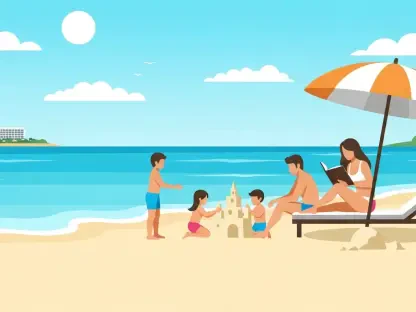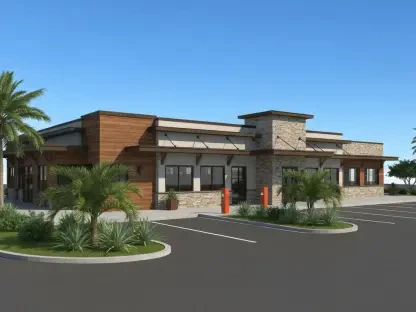In the landscape of Utah’s dining scene, a number of once-beloved restaurants occupy a special place in the memories of both locals and visitors alike. These establishments, which have closed their doors, each had unique features and offerings that made them stand out. From innovative dining experiences to nostalgic atmospheres, the stories of these restaurants continue to resonate deeply with those who frequented them. This exploration of Utah’s culinary past revisits several iconic eateries, reflecting on their distinctive characteristics, the reasons behind their closures, and the lasting legacies they have left behind.
Training Table and The Sconecutter
Training Table was an iconic part of Utah’s dining history, renowned for its cheese fries and the distinctive method of ordering food via telephone from each table. Established in 1977, the restaurant expanded to five locations, offering a unique mix of comfort food and convenience. However, despite its popularity, Training Table closed its doors in 2016 following a lawsuit within the family that owned it. Efforts to revive the restaurant have surfaced, though no significant updates have occurred in recent years. The legacy of Training Table lives on, especially in the memories of those who fondly recall the novelty of its ordering system and the taste of its signature dishes.
In contrast, The Sconecutter offered a different yet equally memorable dining experience. Famous for its sandwiches made with deep-fried scones rather than traditional bread, The Sconecutter captured the hearts of Utahns for over 30 years. Operating 24 hours a day, it became a late-night favorite, particularly for its innovative and satisfying meals. Unfortunately, the last location closed in 2021 and was later destroyed by a fire, marking the end of an era. Despite its closure, the distinctive culinary offerings of The Sconecutter remain a cherished part of Utah’s food culture, remembered for its unique take on the classic sandwich.
Even Stevens and Cedars of Lebanon
Even Stevens was another notable addition to Utah’s culinary landscape, celebrated for its creatively named sandwiches and commitment to fresh ingredients. What set Even Stevens apart was its philanthropic approach; for every sandwich sold, the company donated one to local nonprofits. This model of giving garnered significant popularity and goodwill. Nonetheless, rapid expansion led to financial difficulties, culminating in the chain filing for bankruptcy in 2019 before ultimately closing. Though short-lived, Even Stevens’ innovative approach to both cuisine and community service left a lasting impact, highlighting the potential for businesses to make a positive difference.
Cedars of Lebanon offered a slice of eastern Mediterranean cuisine, distinguished by its eclectic mix of Armenian, Lebanese, Greek, and Moroccan dishes. For 38 years, the restaurant delighted patrons with its exotic flavors and weekend belly dancing shows. Cedars of Lebanon closed in 2019, marking the end of a beloved establishment that had brought a diverse dining experience to Utah. The closure of Cedars of Lebanon represents a significant loss for those who appreciated its rich culinary diversity and cultural experiences. Nevertheless, the restaurant’s influence continues to be felt in the memories of diners who experienced its unique blend of flavors and vibrant atmosphere.
Coachman’s Dinner and Pancake House and Mayan Adventure
Coachman’s Dinner and Pancake House stood as a fixture on State Street for 60 years, retaining a classic retro diner atmosphere that offered breakfast all day alongside traditional lunch and dinner fare. A favorite among various generations, Coachman’s combined the charms of old-fashioned dining with a reliable menu, creating a community of loyal patrons. Despite its longstanding presence, the restaurant closed its doors in 2021. The closure of Coachman’s signified not just the loss of a beloved eatery but also the end of an era in Utah’s dining history. Its legacy persists in the fond recollections of those who enjoyed its homely ambiance and comforting meals.
Similarly notable was Mayan Adventure, a jungle-themed Mexican restaurant located in Jordan Commons. Known for its dramatic water shows and performances by cliff divers, Mayan Adventure offered diners an experience that extended beyond food. The restaurant’s unique theme and entertaining displays drew many visitors, yet it struggled to maintain sufficient patronage to remain profitable, leading to its closure in 2011. Mayan Adventure’s blend of dining and entertainment left a distinct imprint on those who experienced it, showcasing the potential for themed restaurants to create memorable, multisensory dining experiences.
Fazoli’s and Wider Implications
Fazoli’s, once a go-to destination for quick-service Italian cuisine and unlimited breadsticks, holds a special place in the hearts of many Utahns, particularly students from the 90s. Known for its affordability and generous portions, Fazoli’s became synonymous with Italian fast food in the region. Although the chain eventually exited Utah, plans have been announced for its return, with five new stores expected to open over the next few years. The anticipation of Fazoli’s comeback points to a broader emotional connection and nostalgia that former patrons hold for the restaurant, highlighting its significant role in Utah’s dining history.
The closure of these restaurants reflects broader trends affecting longstanding family-owned and themed establishments. Economic challenges, legal disputes, financial mismanagement, and evolving consumer preferences have each played a part in the disappearance of these cherished eateries. Their closures serve as a reminder of the dynamic nature of the dining industry and the myriad factors that influence restaurant longevity. Reflecting on these restaurants offers not just a trip down memory lane but also insights into the evolving tastes and economic realities that shape the food culture of any region.
Nostalgia and Community Impact
Utah’s dining landscape holds a cherished place in the hearts of both locals and visitors, thanks to a number of once-beloved restaurants that have since closed. These establishments each had their own unique charm and offerings, making them stand out in memorable ways. From cutting-edge culinary experiences to environments brimming with nostalgia, the legacy of these restaurants continues to evoke strong emotions in those who dined there. This look back at Utah’s culinary history revisits some of these iconic eateries, examining their special features, the stories behind their closures, and the enduring impressions they’ve left. Whether it was a family-owned diner or a trendy bistro, each restaurant contributed something irreplaceable to Utah’s rich food culture. By reflecting on these now-closed dining spots, we honor the impact they had and remember the flavors and memories that made them unforgettable. Their influence endures as a testament to the vibrant and diverse culinary scene that has shaped Utah.









